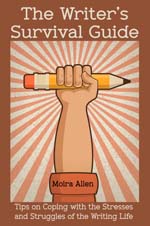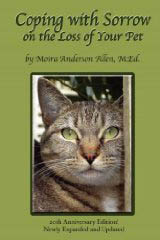 Your Guide to a Successful Writing Career
| |||
|
by Laura Backes After the Columbine shootings, I wrote that, as writers, one thing we can do is realize that all kids deal with pressures and problems that we never faced growing up, and we should make a greater effort to address this in middle grade and young adult literature. I got many responses to my piece, a number of which said, "I agree, but I've tried unsuccessfully to sell my controversial young adult novel for two years. Do you think publishers routinely reject realistic subjects?" Some, perhaps, are. But by and large, I feel most mainstream publishers will take a chance on a novel that deals with a touchy subject if it's well-written. And several of the more gritty, yet well-reviewed titles to have come out in the last few years are not from well-known authors, but those who have published only a few books, if any. I also believe the majority of established publishers don't worry about censorship or community book-banning, but will publish a book if they feel it says something important. So the question remains, why can't some authors get these books published?
Controversy is in the eye of the beholder, but subjects that have raised eyebrows in the past range from death of an important character to teenage sex/pregnancy, physical abuse, drug/alcohol use, homosexuality, and violence. But the best books aren't about the controversy, they're about how the character handles the situation. The main character may be abused by an alcoholic father, but that's not the only thing going on in his life. He may also be on the track team, or adopt a stray dog, or hold down an after-school job. The abuse certainly affects and influences his world, but it's not what the book's about. And while the abuse might define this character at the beginning of the book, the story is really about how the character grows beyond being an abused child, and finds aspects to himself that are worth saving. He might leave home, get help, or report his father to the police. For these books to be effective, the character must become empowered and find a solution to his problem. Your readers have to learn there is a way out. If your book is about a very specific subject, and remains specific, then you'll only appeal to a small audience who can directly relate to that situation. However, if you use the topic as a springboard to more universal themes -- low self-esteem, peer pressure, feeling like a failure -- then the story become timeless. You'll gain a wider audience and an editor's approval. You also have to handle hot topics in an age-appropriate way. Books for middle grade readers often imply the events that have landed the character in his current dilemma, without much detailed or graphic description. For example, in James Stevenson's The Unprotected Witness (Greenwillow), a sequel to his acclaimed The Bones in the Cliff, 11-year-old Pete has finally found a home with a friend and her grandmother after spending a life on the run with his alcoholic father who was wanted by the law. When Pete's father is murdered and he must go to St. Louis to identify the body, we get a sense of Pete's earlier life through flashbacks. And we see the results though Pete's inability to make many friends or follow the rules at school. The reader experiences Pete's anger at his father, his turmoil over loving a man whom he also despises, without seeing all the details of the father's violent alcoholic evenings. Because this is a story of feelings and consequences, it touches any reader who has ever has a sense of not belonging.
Your main character has to think and feel like a real child of that age. The events of the book must be seen through that character's eyes, and interpreted through that character's points of reference. You can't impose your adult interpretation on the story, nor can you make your character too innocent if her circumstances have forced her to grow up quickly. Above all, your main character must have some redeeming traits that ultimately allow him to overcome his situation, or at least point him in the right direction. Characters who are purely evil work well as antagonists, but are not sympathetic enough to be the focus of the story.
Most often, manuscripts are rejected because the writer simply didn't create a strong book. Plots are contrived, characters are one-dimensional, the dialogue sounds stiff, the ending wasn't believable. If you're telling a story with a controversial theme, you have to work even harder at mastering the basics of good writing. The story must be so compelling that the editor can't help but say yes.
This article may not be reprinted without the author's written permission. Laura Backes is the author of Best Books for Kids Who (Think They) Hate to Read, from Prima Publishing. She's also the publisher of Children's Book Insider, the Children's Writing Monthly. For more information about writing children's books, including free articles, market tips, insider secrets and much more, visit Children's Book Insider at https://cbiclubhouse.com/clubhouse/. |
| ||
| |||




